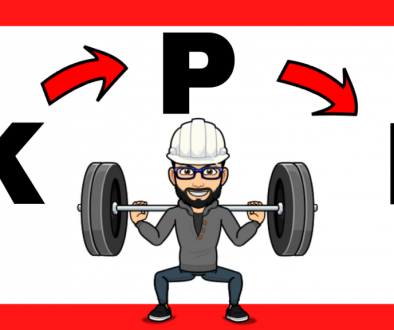Who does Project Controls?
To answer the question of who does Project Controls of a project, the figure of Project Manager might come to mind. However, the Project Manager is the tip of the iceberg, who receives the reports to be able to analyze them and make decisions. There are many other functions that are involved in the project controls process.
Next, we show you the 5 essential people when it comes to controlling a project (plus some other that you will be surprised to see too). Between all of them, they will ensure that the project is being executed according to the project baseline plan. In addition, they will make it possible to compare the progress of the project with the original plan, they will identify possible future problems as soon as possible in order to take corrective actions as soon as possible. Finally, they will help to collect the data necessary to prepare a claim for an extension of time or for the resolution of disputes.
Now, let’s see who does project controls within a project. Are you ready?
Who does Project Controls in a professional way?
The Project Controls Specialist is the person in charge of controlling a project in a professional way. He is not a Project Manager or a Project Controller. The Project Controls specialist is the link between the different functions within a project. He is the person in charge of collecting information, shaping it, and preparing the different progress reports of a project. These reports will carry with them an analysis of the project based on KPIs, project progress curves, and/or resource histrogram.
The information that a Project Controls Specialist must collect is all that related to the schedule of activities, financial information of the project, everything related to the function of Supply Chain Management, as well as information and data on the phase of engineering, quality, and environment, safety and health, and that which was necessary on the project management function itself.
The Project Planning Specialist
Many times the Project Planning Specialist and the Project Controls Specialist are the same person. However, this depends on the nature of the project. In large budget projects, the one who does the control of a project in a professional way is the Project Control Specialist. All tasks related to creating the project baseline, updating the Gantt schedule periodically, analyzing the Gantt Chart, or preparing progress reports using S-curves are performed by the Project Planning Specialist.
The Project Planning Specialist manages the Gantt Schedule using professional project planning software. One of the most widely used project planning software worldwide is Primavera P6, from Oracle. However, there are others like Microsoft Project.
Project Controller: key role for project controls
The third figure Project 2080 considers important when controlling a project is the Project Controller. This figure represents the financial control of the project. The Project Controller must collect from the project baseline preparation phase, and on a regular basis, the financial data of the project, such as project sale, project cost, project margin, risks, opportunities, contingencies, etc.
The Project Controller is the person in charge of creating a code structure to allocate the cost of our project from month to month. This structure must be approved by the Project Manager and distributed to all project participants. These codes must include the cost of labor, machinery, subcontracted equipment, as well as the materials that the project needs to be executed correctly. As a cost control tool, we can talk about SAP, widely used worldwide.
In addition to the financial control that the Project Controller does on a regular basis, it also works together with the Project Planning Specialist to develop the Cost Breakdown Structure (CBS). This structure consists of a series of unique codes that map both with the cost codes described in the previous paragraph and with the codes of the Work Breakdown Structure (WBS).
Thanks to the CBS codes, the WBS, and the mapping done with the codes that the Project Controller uses to control project costs, the Project Control Specialist will have the initial structure for the creation of a multitude of reports that cross the data related to the project schedule and the project costs. These data will be the basis for Earned Value Management (EVM).
Project Engineering Manager
Once we have seen the figure of the Project Controls Specialist, Project Planner, and Project Controller, do you know who else does Project Controls? Now let’s talk about the Project Engineering Manager. In other forums, he is called the technical project manager. This is the most important figure within the engineering department of the project. He is in charge of defining the list of deliverables or the list of project drawings. In it, the engineering manager assigns each drawing within the corresponding WBS, which has been previously defined by the project planner. This will make it much easier to track the project month by month as the project planner will be able to identify these plans within the Gantt schedule.
In addition, the Project Engineering Manager of the project will be in charge of distributing the engineering tasks among his work team. In this way, he will be able to provide the Project Planning Specialist and Project Controls Specialist with the assessment of his own resources.
Thanks to the list of drawings and the assessment of own engineering resources, the project planner can assign the workload of the engineering phase to each task. It should be noted that the technical manager must review and approve the project baseline. Said commitment must be with the dates, activities to be carried out, as well as with the valuation of own resources.
Supply Chain Manager
As with the Project Engineering Manager, the Supply Chain Manager feeds key data to both the Project Planning Specialist and the Project Controller. The purchasing and logistics phase will be defined during the project baseline creation phase. In this process, there is a commitment from the Supply Chain Manager with the work schedule. The activities of the Supply Chain will give us information about the dates on which the orders were placed, the manufacturing periods, intermediate milestones, as well as the delivery on site of each of the supplies.
As in any other phase of the project, the entire scope related to the supply chain will be distributed according to the Work Breakdown Structure. Likewise, said scope will be coded using the CBS (Cost Breakdown Structure) codes. Finally, the allocation of the costs will come to the hands of the Project Controller, in order to update the financial and cost management program of the project.
Any other roles who does Project Controls
In addition to the 5 professionals in project management that we have described above, additionally, we want to talk about other figures who also contribute their grain of sand when Project Controls is carried out.
Responsible for Health, Safety, and Environment within Project Controls
Both health and safety, as well as the environment, are aspects of very high importance during the execution of a project. That is why during the Project Controls phase it is necessary to see the progress of the different KPIs that have been defined at the beginning of the project. As in the previous cases, the HSE Manager will be in charge of providing all the necessary information to the Project Control Specialist.
Responsible for Risks, Opportunities, and Contingencies
The importance of ROC (Risk, Opportunities & Contingencies) comes from the idea of anticipating the future. Both from the point of being able to mitigate risks, and from the fact of seeing opportunities that help us improve the margin of our project. It is a continuous process that begins in the bidding or offer phase. On a monthly basis, we will have to monitor the risks, opportunities, and contingencies of our project. Typically this is a Project Manager role. However, there may be cases in which it is necessary to create this position within a project, due to its size. Correctly managing risk, opportunities and contingencies is the task of the entire project team. After all, they are all part of the ROC, to a greater or lesser extent.
Head of Change Management
Last but not least, we will talk about the person in charge of Change Management. There are projects that, due to their large size, require a person to manage change within a project. These changes can impact both the cost and the term of the project. In some cases, the changes are due to modifications in the scope of the project. Other times, they are changes that refer to unit costs. What is clear is that we will need to monitor and control these changes due to their impact on the project. The management of change should be reflected both at the financial level and at the level of the schedule of activities.
IN PROJECT 2080 WE WOULD LIKE YOU TO REMEMBER
Project Controls takes us to a higher level within project management. This is thanks to the information that is obtained on a regular basis from the different managers of the project. This information allows the Project Manager to manage the project, monitor it more closely, and be able to inform in advance of the different actions to be taken to reduce the risk level of the project. In short, Project Control helps us to anticipate problems and have enough reaction time to solve them without impacting the cost, quality, and time of the project. That is why a good multidisciplinary team, and specialist in each of its tasks, is necessary to be able to meet the objectives set in the project’s baseline.



